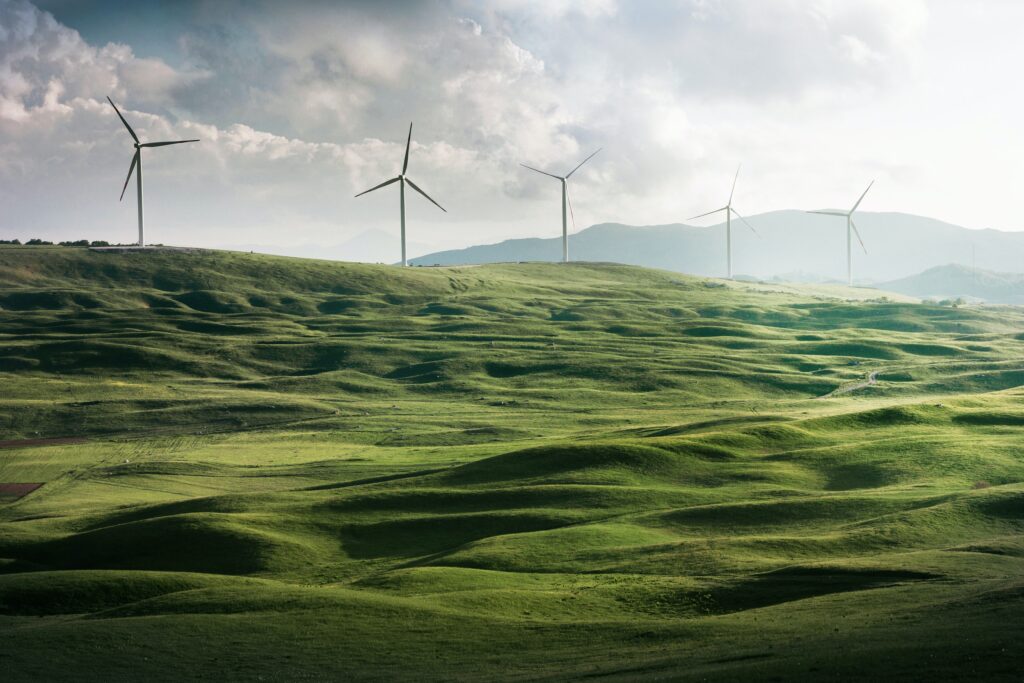
“If the internet were a country, it would be the sixth most polluting country in the world. Similar to the entire carbon dioxide emissions of Germany.” – Tom Greenwood.
To counteract and prevent more damage to the environment due to our usage of energy-powered devices, the future of website maintenance needs to adopt a planet-friendly approach.
Sustainable web maintenance is an approach to creating web services that put people and the planet first. It means preserving and operating your digital products and services in an environmental way that reduces your website’s carbon footprint in an efficient, open, honest, clean, resilient and regenerative way.
In this article, we’ll cover the environmental impact of unsustainable website maintenance plans, and how you can build an eco-friendly alternative.
The Internet’s Rising Carbon Footprint
In the past, it was believed that replacing offline paper services with digital alternatives was seen as a means of “going green.”
In fact, the benefits of digital products and services tend to be simplicity, accessibility, and lower operating costs. While saving paper and preventing further deforestation is good, websites also come at a carbon cost.
While there has been a large focus on the negative impact of single-use plastics, what’s often overlooked is the carbon footprint of the internet. Storing, creating and consuming digital content is an intensive, massive resource that is consequently highly polluting.
During the pandemic, as most of us were working and living from home, computer and internet usage rose drastically for millions of people. Whether it was a quick Zoom call, a webinar, a workshop, an online gaming session or a virtual gym class, people were using the internet more.
What most people didn’t recognise was that every one of those activities has an environmental cost associated with it. To run the device that you’re using, a couple of grams of carbon dioxide are emitted due to the energy needed to power the device.
In web development, significant amounts of energy are needed to:
- Stow digital content
- Move that content from a data warehouse
- Power the internet connection
- Operate the hardware and technology that is being used to access digital tools and products
All of these aspects have become a requisite and vital part of web development. However, all of them have a carbon footprint.
The True Environmental Cost of the Internet
Even though the energy required to view a single page is minor, around 4.1 billion people (54% of the world’s population) use the Internet each and every day. Therefore, those few grams of carbon emissions combined with the greenhouse gases emitted by each activity are much more significant.
It is estimated that the carbon footprint of our devices, the internet and the infrastructure that supports them is between 2 to 4% of global greenhouse gas emissions. In the context of web development, this includes keeping up with security updates, creating fresh content, promoting traffic growth, and making sure your website visitors have a good experience.
It is estimated that by 2025, communications tech will emit more carbon emissions than any country except the United States, China and India. To put it into perspective, in 2018, the use of Netflix worldwide accounted for 300 million tons of carbon dioxide, which is what Spain emits in a year.
The Internet consumes large amounts of electricity and a significant part of this energy is consumed in the data centres where information is stored and processed. Data centres may not appear to be using a lot of electricity, as they are generally fairly anonymous warehouses, but inside are thousands of computers that process data and large air conditioners that try to keep them cool.
All data centres are starved for electricity, but some are much more polluting than others. This all depends on their energy efficiency and whether they are committed to using green energy sources.
If we don’t start using a planet-friendly website maintenance approach, it is estimated that 250,000 additional deaths will happen every year between 2030 and 2050 due to climate change.
So how do we develop an environmentally conscious, planet-friendly website maintenance plan?
Building a Planet-Friendly Website Maintenance Plan
The energy consumption of websites can be roughly divided into three types of activity:
- Data storage – the servers on which your website is saved
- Data transfer – the way in which the data is acquired or transmitted
- Processing power – the energy used by the computer
Building a planet-friendly website maintenance plan means taking action to reduce the carbon footprint that these three activities produce.
Here are 4 things you can do now to improve your website’s sustainability:
- Choose a green web host
- Make your website run more efficiently
- Make your data centre as energy-efficient as possible
- Become a climate-positive business and set sensible green policies

Want to find out how your website is impacting the planet?
Check your website on the Website Carbon Calculator
1. Green Web Hosting
When companies select their website hosting company, many don’t realise that the company they’ve selected uses dirty fossil fuel energy. It’s important to remember that there are environmental implications of hosting firms that should be considered, ranging from electronic trash produced by equipment to the impact of corporate operations such as offices and travel.
How Does Green Web Hosting Work?
A common approach web hosts take when wanting to go green is to generate energy equal to or greater than consumption through renewable sources like solar and wind.

(Image source: Unsplash)
For companies not investing in their own renewable energy sources, they can rely on certified green energy suppliers, purchasing Green tags (otherwise known as a Renewable Energy Certificates) to contribute energy to the grid. This offsets consumption without the need for direct power generation, a cost-effective solution for web hosting companies.
Additionally, companies can gain carbon credits through recycling initiatives, allowing them to neutralise their carbon contributions to the global system.
The greenest hosts focus on minimising any detrimental effects that web hosting has on the planet by using renewable energy to power their data centres, and aiming to employ the greenest solutions obtainable to host web projects.
What Are The Benefits To Green Web Hosting?
- Environmentally friendly: Reduces carbon footprint and promotes eco-friendly practices through the use of sustainable energy sources like solar and wind.
- Cost-effective: Lower operational costs compared to conventional hosting, resulting in more affordable hosting packages without compromising essential features.
- Diverse hosting options: Offers a complete range of hosting services, including shared hosting, VPS hosting, and Managed WordPress Hosting.
- Enhanced business profile: Endorsing green web hosting contributes to a positive business reputation, showcasing a commitment to sustainable living and earning recognition as a conscious change-maker in the professional market.
How To Find A Green Web Host
Here are the 2 ways that we recommend you start your search for a green web host:
- Look into your current hosting provider to see how they handle sustainability.
- If you’ve been looking for a new hosting provider, the Green Web Foundation’s directory is the ideal place to start. It lists over 500 hosting companies from around the globe who have made a commitment to using green energy in their data centres.
Unsure if the provider is truly a green web host? Anyone that is, advertises it front-and-centre!

2. Energy-Efficient Website Through Web Design and Development
When we talk about website energy efficiency, it’s easy to think of it as a strictly technical subject. However, before a website is even developed, efficiency can be increased. Design and content have a significant impact on energy efficiency, and below we’ve listed important considerations that you should take into account.
Here are 17 ways to make your website more energy-efficient:
- Reduce the amount of photos and videos on your page because they are the biggest contributors to page weight. More data needs to be transferred and so more energy is used.
- Choose fonts carefully and optimise existing fonts. This is because they add a lot of file weight to websites. A single font file can be as large as 250 kilobytes, and that’s just for the normal weight. Add an additional 250kb if you want it to be bold. Use system fonts whenever possible and keep font differences to a minimum.
- Write clean code. Write efficient queries and avoid duplication by keeping your code clean and straightforward.
- Optimise images. Instead of depending on CSS to resize images, load them at the correct scale. Images should be compressed; For each image, use the most efficient file format, such as WebP instead of JPEG.
- Use less JavaScript
- Use Accelerated Mobile Pages (AMP)
- Build static web pages
- Use Progressive Web App technology (PWA)
- Use server caching
- Choose a host with a high PUE rating
- Use a data centre close to your audience (website users)
- Consider using a Content Delivery Network (CDN)
- Block bots. Bots use approximately 50% of resources i.e. processing and bandwidth
- Use dark mode when programming
- Always have the latest PHP version installed
- Write code that’s reusable and not only for one-off projects
- Remove any unused code or formatting. This helps to downsize code and reduce file sizes
3. Switching To Energy-Efficient Web Development Technology In Your Data Centre
When changing over the technology that you have in your data centre, you should look for new computer equipment that has a Power Usage Effectiveness (PUE) rating over 1.0.
Follow the Building Research Establishment Environmental Assessment Method (BREEAM) when designing your data centre, as it can help you reduce overall power consumption. A key component that will help you to make your data centre more energy-efficient is making sure it’s powered entirely by renewable energy.
Examine your servers’ efficiency, as well as the amount of power utilised in standby mode or under high-pressure conditions. Set benchmarks for the server’s compute, cooling, temperature ranges, and power requirements at various stages.
An important factor of having a high PUE ratio is the location of your data centre. Power usage effectiveness (PUE) is a ratio that was created by Green Grid to describe the amount of energy computing equipment used in a data centre and how efficiently it is used. PUE is controlled by two factors: cooling load factor and power load factor, both of which are influenced by the location you choose to have your data centre in.

(Image source: Unsplash)
4. Becoming A Climate Positive Business And Set Sensible Green Policies
Internally at your company, set sensible environmental policies that aim to decrease waste, promote recycling, and eliminate any needless travel. If you want to make sure that your policies align with a climate-positive business, you can have them externally assessed to ISO 14001 requirements for the Environmental Management Standard.
You can also invest in conscientious reforestation efforts and climate-crisis initiatives that have been certified as carbon-free. On a more local level, trees are vital in helping to save energy in urban environments by providing shade and lowering temperatures. According to the Environmental Protection Agency (EPA), the shade provided by trees, together with the water vapour they emit, can reduce peak temperatures by as much as 11 – 25°C (20 – 45°F) when compared to locations that are not shaded. This is more of a long-term solution.
Internal temperatures can drop to -13 – -12°C (8 – 10°F) when shade is cast on an office building or residence. According to some estimates, a single tree’s shade may save the same amount of electricity as ten room-sized air conditioners running for 20 hours a day. Planting trees in the area where your servers are kept can assist in keeping the temperature down.
Altering some of the physical architecture and design of your data centre can also help. The construction of a terrace is one approach for enhancing data centre PUE.
In hotter climates, roofs are heated first. Consider planting plants on the roof/terrace and watering them every day to ensure an environmentally friendly data centre insulation method. Another planet-friendly way to keep your servers cool is to paint the outside walls of your data centre with a weather shield coating to improve PUE.
Summary
Wouldn’t it feel good to know that your company is preventing climate change, reversing deforestation, creating renewable power and promoting green hosting and sustainable web design and development?
You can first start by using tools like the Website Carbon Calculator, Google’s Lighthouse tools, and Google Analytics to identify waste and inefficiency on your websites, such as heavy pictures, antiquated file formats, and poor page load times.
Renewable energy only accounts for approximately 26.2% of global electricity generation. By improving your website’s sustainability and adopting a planet-friendly approach, you can help to counteract and prevent more damage to the environment.


